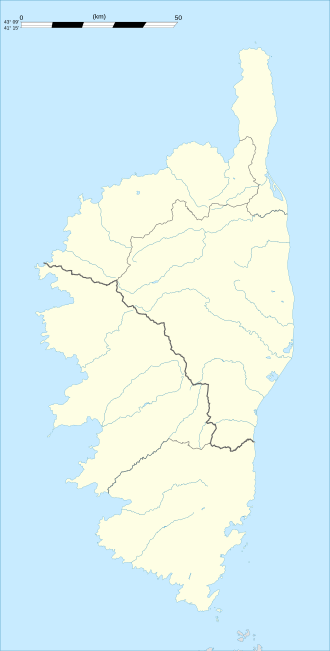Altiani | |
|---|---|
 Altiani village, with Monte Cardo in the background | |
| Coordinates: 42°14′17″N9°17′31″E / 42.2381°N 9.2919°E | |
| Country | France |
| Region | Corsica |
| Department | Haute-Corse |
| Arrondissement | Corte |
| Canton | Ghisonaccia |
| Government | |
| • Mayor (2020–2026) | Jean-Yves Bussetta [1] |
Area 1 | 18.29 km2 (7.06 sq mi) |
| Population (2022) [2] | 54 |
| • Density | 3.0/km2 (7.6/sq mi) |
| Time zone | UTC+01:00 (CET) |
| • Summer (DST) | UTC+02:00 (CEST) |
| INSEE/Postal code | 2B012 /20270 |
| Elevation | 159–1,192 m (522–3,911 ft) (avg. 618 m or 2,028 ft) |
| 1 French Land Register data, which excludes lakes, ponds, glaciers > 1 km2 (0.386 sq mi or 247 acres) and river estuaries. | |
Altiani (French pronunciation: [altjani] ) is a commune in the Haute-Corse department of France on the island of Corsica.
Contents
- Geography
- Location
- Relief
- Climate and vegetation
- Access roads and transport
- Neighbouring communes and villages
- Urbanization
- History
- Modern times
- Contemporary Era
- Economy
- Administration
- Demography
- Culture and heritage
- Civil heritage
- Religious Heritage
- Natural heritage
- ZNIEFF Lower Valley of the Tavignano
- Festivals and leisure
- Notable People linked to the commune
- See also
- References
- External links













